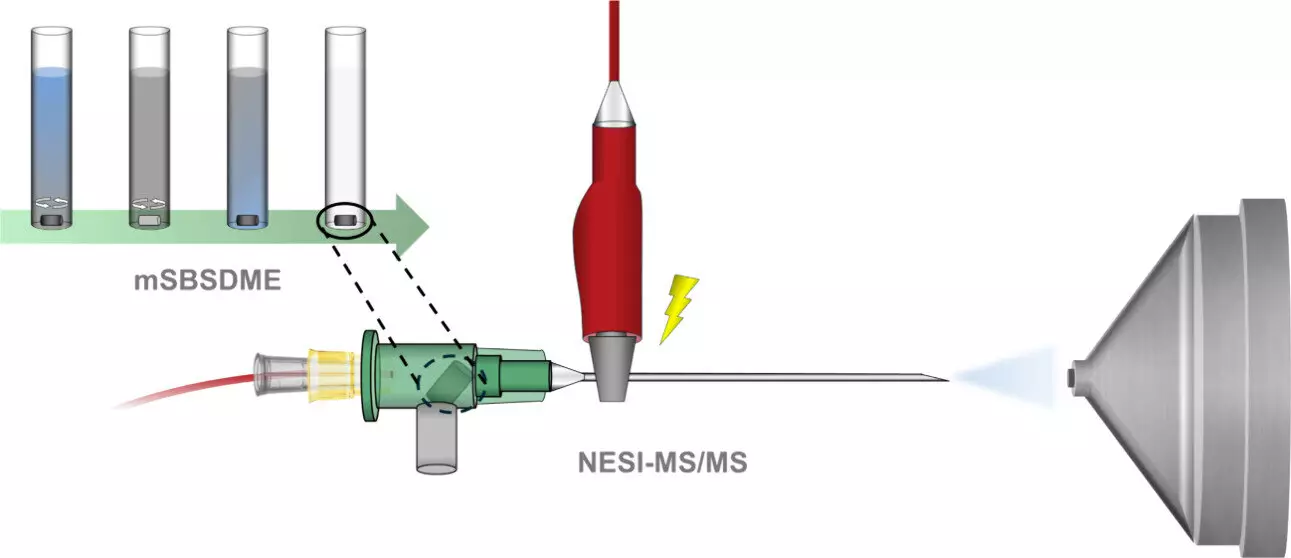As cannabis consumption continues to gain traction in Europe, where approximately 8% of adults reportedly used cannabis in 2022, the urgency for effective monitoring systems has never been more pronounced. The legalization discourse surrounding cannabis has amplified concerns over its recreational use, particularly due to the associated health implications and potential societal challenges. As with any substance abuse issue, the crux of an effective intervention lies in the capacity to identify usage with precision and promptness. Establishing a tool that enables rapid detection of THC—the principal psychoactive compound in cannabis—could be a game-changer in governing cannabis use across various sectors, from law enforcement to healthcare.
Innovative Solution: Saliva-Based Testing
In a groundbreaking collaboration between the University of Cordoba and the University of Valencia, researchers have unlocked a revolutionary technique that allows for the swift detection of THC using saliva samples. Traditional testing methods often require extensive procedures and larger sample sizes, which can be cumbersome and time-intensive. The ingenuity of the new analysis technique lies in its simplicity: just a few drops of saliva are all that are needed to determine THC presence within minutes. This advancement not only underscores the importance of saliva as a convenient biological fluid for detection but also addresses the need for non-invasive testing methods that respect individual privacy while yielding reliable results.
The approach taken by the research teams revolves around a technique known as “dispersive microextraction by sorption.” This method employs a specialized miniaturized stirrer bar, equipped with magnetic properties, designed to extract THC through a two-step process that drastically minimizes the time and effort typically required.
Understanding the Mechanics Behind the Method
At the heart of this innovative technology is an intricate interplay of magnetic and chemical principles. By introducing a material that selectively binds to THC into a saliva sample and applying magnetic agitation, the researchers can effectively isolate THC molecules from the sample. Jaime Millán Santiago, a researcher involved in the project, enthusiastically describes the procedure, highlighting the significant reduction in steps from five to just two.
The first step involves a simple magnetic extraction, where THC is captured by the particles on the stirrer bar. Once collected, the focus then shifts to the second step: elution, where a high-voltage process alongside an organic solvent separates the THC from the capturing material. The resultant THC-rich solution is subsequently funneled into a mass spectrometer for accurate concentration measurement. It’s captivating to witness how this marriage of magnetic technology with traditional chemical analysis not only enhances efficiency but also streamlines the entire testing protocol into a compact, practical format.
Implications of This Advancements
The implications of such advancement are significant. The potential for integration into routine laboratory methods means this testing approach could redefine cannabis monitoring in various sectors, from workplace testing to forensic investigations. Professor Rafael Lucena posits that this technique stands out for its unmatched sensitivity and precision, which are critical criteria for any credible drug testing methodology. The ability to swiftly and accurately gauge THC levels in saliva opens doors to more responsible drug monitoring practices, which could ultimately help mitigate the health risks associated with cannabis use.
Moreover, with cannabis laws evolving, the need for fresh frameworks that ensure public safety while accommodating individual liberties emphasizes the importance of this kind of rapid-response technology. As society grapples with the changes brought about by cannabis legalization, technologies like this can serve to not only support regulatory compliance but also enhance understanding of usage patterns, leading to better-informed health policies.
The advancement made by the research teams from Cordoba and Valencia not only fills a significant gap in current testing methodologies but also paves the way for a more comprehensive approach to substance abuse management. By equipping healthcare professionals, law enforcement, and organizations with rapid and reliable tools for THC detection, the emphasis can now shift towards preventive care and responsible consumption. This innovative testing method illustrates a critical intersection of technology and public health, and the pressing need for societal structures to adapt and respond as we navigate the complexities of an evolving cannabis landscape.

